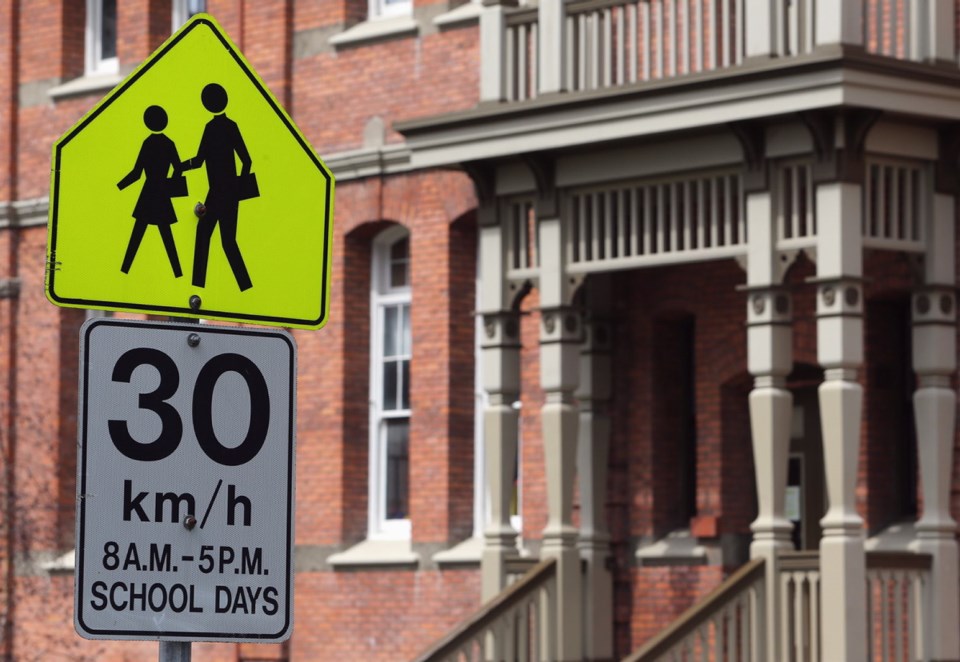The time for B.C’s “education wars” is over, at least temporarily. According to British Columbia Teachers’ Federation president Terri Mooring, a broad-based committee of 25 or so teachers are on deck this summer with four Ministry of Education working groups planning for the possibility of September school reopenings.
Thus far, the long awaited announcement of the plan to reopen is at the “so far, so good” stage: Some additional funding for school cleaning, reorganization of “learning groups” and updated health-and-safety regulations along with the caveat that a surge of COVID-19 cases in the fall could require revision of planning accomplished so far.
That’s timely and reassuring given that during June’s provincial school opening “test run,” only about half of B.C.’s teachers felt comfortable about returning in September, with many parents even less comfortable.
The more solid information coming from the working groups the better the prospect of school reopening will be for parents and the kids themselves.
If there is anything to be learnt from the exploding dissensions of the state by state public education COVID crisis to our immediate south it is that joint teacher/ government leadership here must include frequent centralized and trusted communication from both government and the union.
With both internal school district personnel and external community interests kept up to date frequently on plans and options as they emerge, communication will, hopefully, include information about a variety of things; access to emergency funds and contingency plans designed to provide guidance when previously unanticipated consequences of September school reopening occur.
That’s significant since much of the detailed planning is still up to the 60 school districts.
Right now, for example, the move toward the technology and pedagogy of part-time, online learning leaves a majority of teachers feeling unprepared should that become part the new reality of public education.
Already the flag is being raised, both here and in other COVID-19 disrupted countries, that the jump from classroom learning techniques to the practice of what is being labelled “asynchronous” or online teaching and learning is a bigger step than anyone anticipated.
The rapid shift to online teaching and learning will require even experienced teachers to reconsider modification of their time tested pedagogies in ways they’ve never had to think about before.
Research already indicates that student-student and student-instructor interactions can still take place, but there may be a delay depending on the variety of technologies and software used.
Teachers from K-12 already know that some students may have a hard time paying attention for longer periods of time. Subsequently, students are much more likely to watch several short videos than one very long video.
That seems obvious, but teachers will need to become increasingly comfortable with sharing and providing links to websites, YouTube videos, etc. that will enhance student understanding. Even with that support, it will be easier for most students to organize and retain knowledge that is delivered in smaller “chunks.”
With classroom learning, teachers can pace the time spent on a specific topic simply by watching the class and knowing full well that, despite everybody’s best efforts, students will learn in their own way at their own pace — time to slow down, review and reset.
Online teaching will be more like teaching several classes at once rather than one class for a specific period of time. In a classroom kids can articulate their confusion or difficulty with course content, projects, requirements, or instructions for activities. That will not be so easy for many kids unless online teaching provides clear, concrete, and specific feedback so students can understand what they need to do in order to “get it” and improve their performance in a new isolated keyboard and screen driven environment.
Classroom teachers, especially at senior levels, are trained to promotes openness and make allowance for different opinions to exist. Misconceptions and misunderstandings can be diagnosed without delay by timely responses to comments and questions. Not so much with online communication.
All that and more will become the norm but it will take practice on the behalf of teachers and kids and will take time. None of this will simply fall into place once public education opens up again.
In a general sense, response to crisis, and that is what we are talking about here, will either bring historically dissident groups like the B.C. Teachers’ Federation and the B.C. government together to focus on common goals or become a source of continued, even elevated, friction.
When a large-scale crisis occurs because of a natural disaster, a terrorist attack, a global financial crisis or massive bushfires like those in New South Wales recently, it is always the ability of dissenting groups to work together which overcomes the worst outcomes which might have occurred.
In the Australian state of Victoria, Melbourne-based Sikh volunteers altered their weekly meal time to help firefighters and homeless families in need while the Australian Islamic Centre, alongside a variety of Christian groups, used social media to ask for donations and hosted cookouts to raise money for relief.
It was a classic example of difficulties being set aside in order to achieve a common goal.
Boards of education, parents and kids from 60 B.C. school districts will be looking for indications of similar unified leadership from government and the BCTF along with other “partners” as we move toward September.
A great deal more work to be done but so far the indications are encouraging — former adversaries are now working together and hopefully that will continue should the need for “Plan B” become a reality.
Geoff Johnson is a former superintendent of schools. [email protected].



